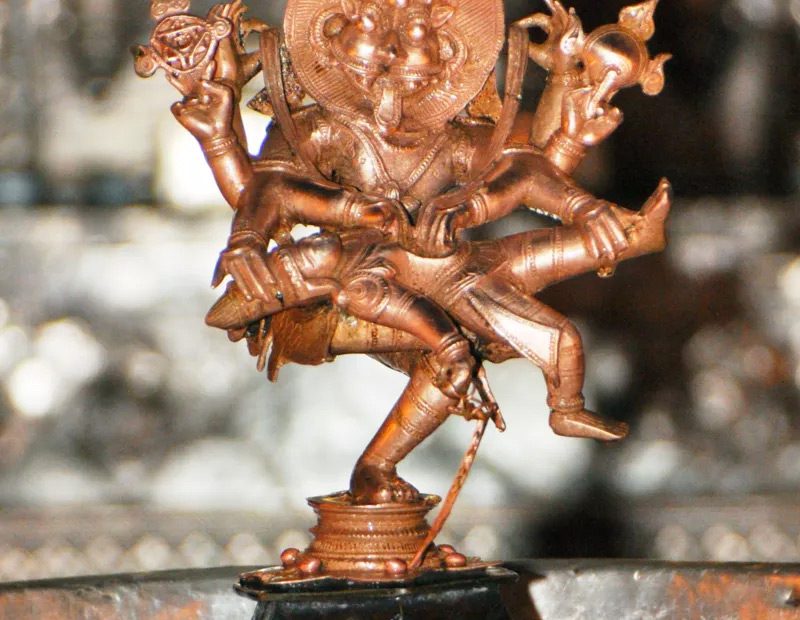Image of Sri Narasimha courtesy : https://svtmulki.org/about/deities/
Śrī Madhwacharya, the third incarnation of the Vayu had established the philosophy of Realism or Tatvavāda in the beginning of the 14th century. There were three great pillars of the philosophy who came in succession and popularized the philosophy across the world. They were Śrī Jayatīrtha, Śrī Vyāsarāja tīrṭha and Śrī Rāghavēndra tīrṭha (in the order of their appearance).
Śrī Vyāsarāja, apart from his great work of tātparya chandrika was famous for constructing more than 600 temples of Hanumān and was the Rājaguru of the famous King Krishnadēvarāya of the Vijayanagar empire. Śrī Vijayīndra Tīrṭha was a great ascetic in the great lineage of Śrī Padmanābha Tīrṭha and a disciple of Śrī Vyāsarāja. Śrī Vijayīndra Tīrṭha had to join the lineage of Śrī Rajendra Tīrṭha and become the successor of Śrī Surendra Tīrṭha. Later Śrī Vijayīndra Tīrṭha amassed great knowledge and scribed 104 works of great importance spread across philosophy, epics and hymns. He was also a master of all 64 arts and skills and he demonstrated his supremacy in each one of them through feats and challenges. His durithapahara stotram is a proof of his knowledge, poetic aptitude and grammar. Śrī Vijayīndra spent most of his time in Kumbakonam and his vrindāvan is also there at the banks of River Kaveri.
Śrī Vijayīndra visited Udupi on the invitation of Śrī Vādirāja another great disciple of Śrī Vyāsarāja. Before this visit Śrī Vijayīndra was travelling in the area of the Vijayanagar kingdom where a serpent came across his path and signaled him towards a dry well close by. There was an idol found there in a box of bhūvarāha swāmi. Later when Śrī Vijayīndra was travelling in the state of Kerala, people in an area came to him and informed him that they had a temple of ugra narasimha and they were unable to bear the power radiated by the idol. On their request, Śrī Vijayīndra replaced the idol of ugra narasimha with bhū varāhaswāmi and now the area is called as Varahapura. Śrī Vijayīndra continued his journey across the coastal district of Karnataka and it was already getting dark and the entourage was nearing Mulki. Śrī Vijayīndra sought fire for the torch from the Jain King’s palace through a disciple and was refused any help. Swāmīji sought divine help for the light and the whole Jain King’s palace was ablaze providing the light to Śrī Vijayīndra till he reached the destined place for consecrating the idol. After the incident the King tried to construct a new palace but each time the tree cut for wood would turn into coal. Even today the descendants of the family come to the temple and pay their respects to the Lord.
Swāmīji came to a small temple where there was an idol of Viṭṭala being worshipped. The priests were descendants from the clans of Brahmins who were brought from banks of river Saraswati to the Gomantak province by Parashurama. Swāmīji‘s divine insight indicated that this would be the right place for the idol and it was consecrated there on the full moon day of Margashira month of the Hindu calendar. Though consecrations are not done in Dakshinayana (southern journey of the sun), this is one of the rarest muhurtha fixed by Śrī Vijayīndra himself.
The idol is an 8 armed 3 eyed idol and very unique as it is piercing and tearing through the stomach of the demon King Hiraṇyakashipu.
An ardent student of Indian philosophy-Tatvavada.. with focus on management and leadership insights from Ithihasa and Puranas. Interested in Neeti and dharma shastras.
